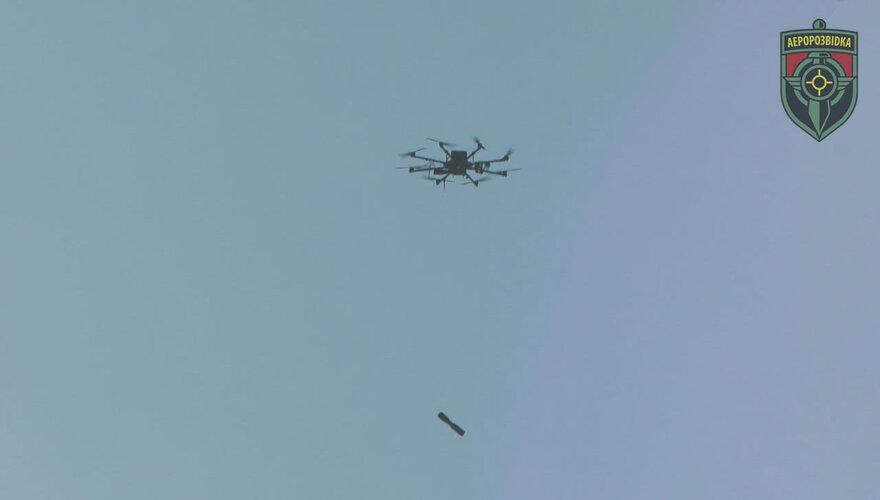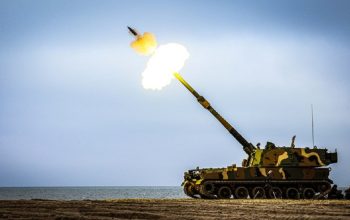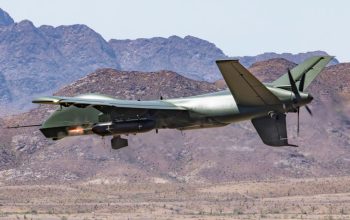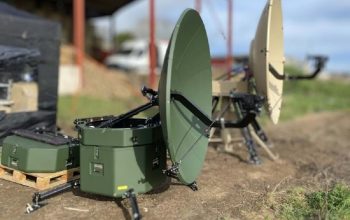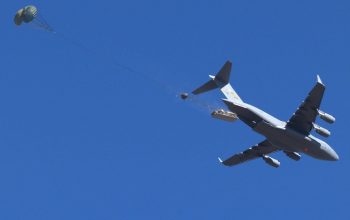Ukrainian forces showed unmanned aerial vehicle attacks on a Russian armored vehicle recently, with expected results. Probably they were using converted RKG-1600 drone-dropped munition. The video was made public by Ukraine Weapons Tracker. Seemingly Ukrainian forces are using converted grenades as a drone-dropped munition to engage the enemy. The ammunition in the video is partially similar to the RKG-3 hand grenade, but only the case of the grenade is still there Recently Ukrainian forces also utilising RKG-1600 drone-dropped munition to hit what are claimed to be Russian MRLS resupply vehicles.
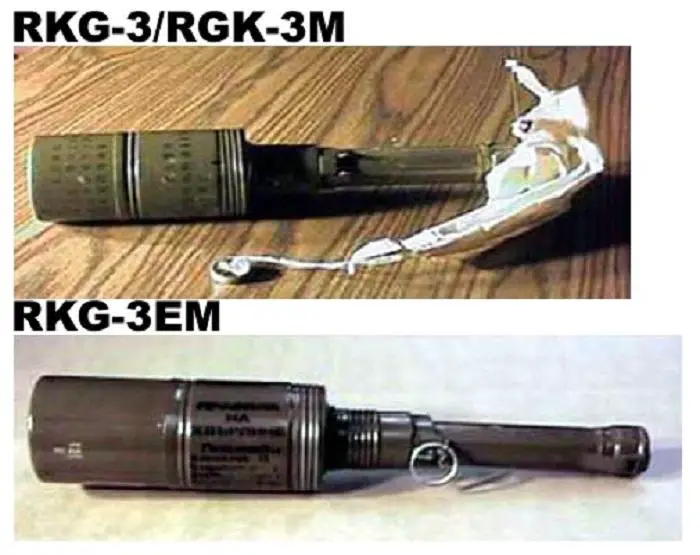
RKG-3 (Ruchnaya Kumulyativnaya Granata, Handheld Shaped-charge Grenade) is a series of Soviet anti-tank hand grenades. It superseded the RPG-43, RPG-40 and RPG-6 series of grenades. It entered service in 1950, but was still used by Iraqi and Afghan insurgents in the 2000s and 2010s, against vehicles of NATO forces. The grenade has an odd strap-like lever (or “spoon”) that covers the base of the handle and runs up each side of the handle. When the pin is pulled, the “spoon” falls away, and when the grenade is thrown a spring deploys a four-panelled drogue parachute.
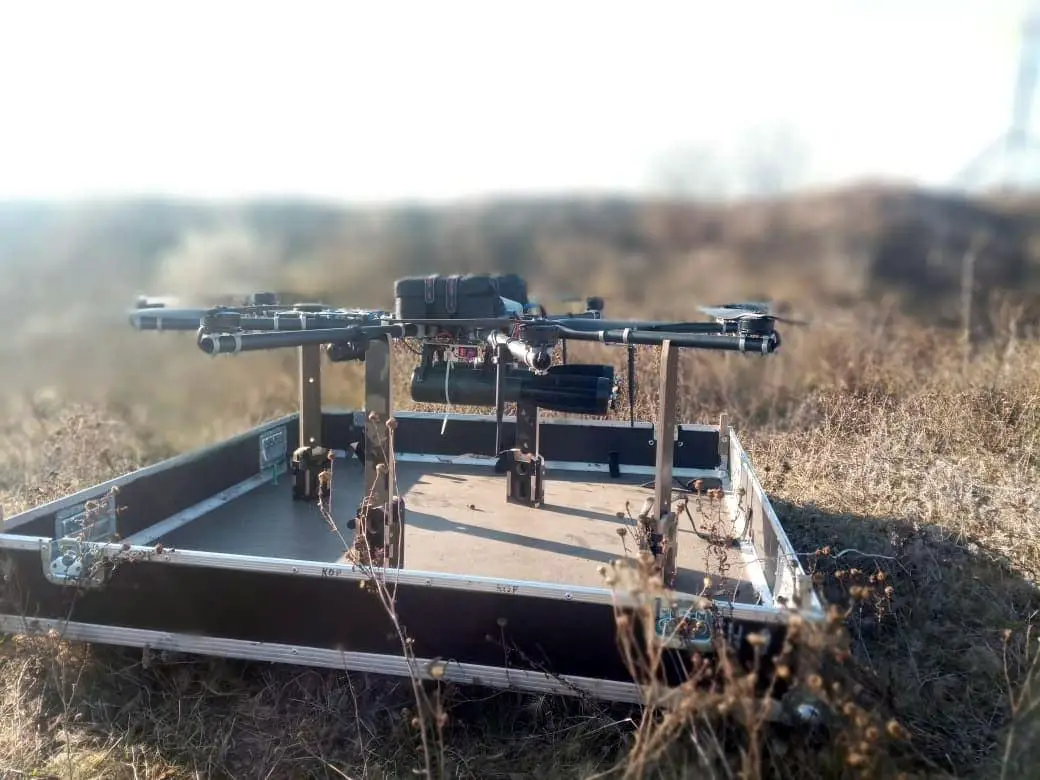
This parachute stabilizes the grenade in flight and ensures that the grenade strikes the target at a 90 degree angle, maximising the effect of the shaped charge. The lethality radius is within 2 meters from concussion and fragmentation. The casualty radius is within 20 meters and the danger space from fragmentation is within 50 meters. The fuze in the handle activates the grenade. When the parachute deploys, its ejection throws a weight to the rear of the handle and disables the safety. When it impacts or stops, inertia causes the weight to fly forward and hit the spring-loaded firing pin, which activates the primer detonator in the base.
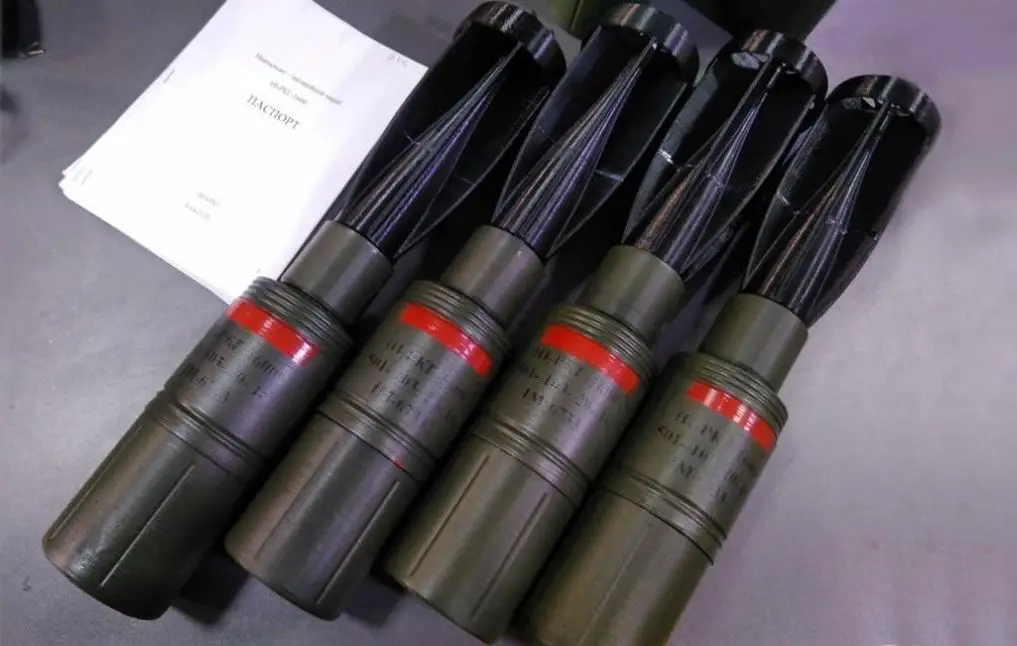
Ukrainian Mayak Plant enterprise has developed a more professional approach to convert RKG-3 hand grenade into bomblet for drones – an unguided RKG-1600 ammunition. The sensitive fuze guarantees that the grenade will detonate if it impacts any target. The energy of the RKG-1600 hollow charge is able to penetrate the armored vehicle when attacking from above. The original RKG-3 used a basic shaped charge with a steel liner and had a penetration of 125 mm against Rolled Homogeneous Armor (RHA). The RKG-3M used a copper-lined shaped-charge warhead and had a penetration of 165 mm; the RKG-3T had an improved copper liner that had a penetration of 170 mm. The RKG-3EM has a larger warhead and boasts a penetration of 220 mm.


